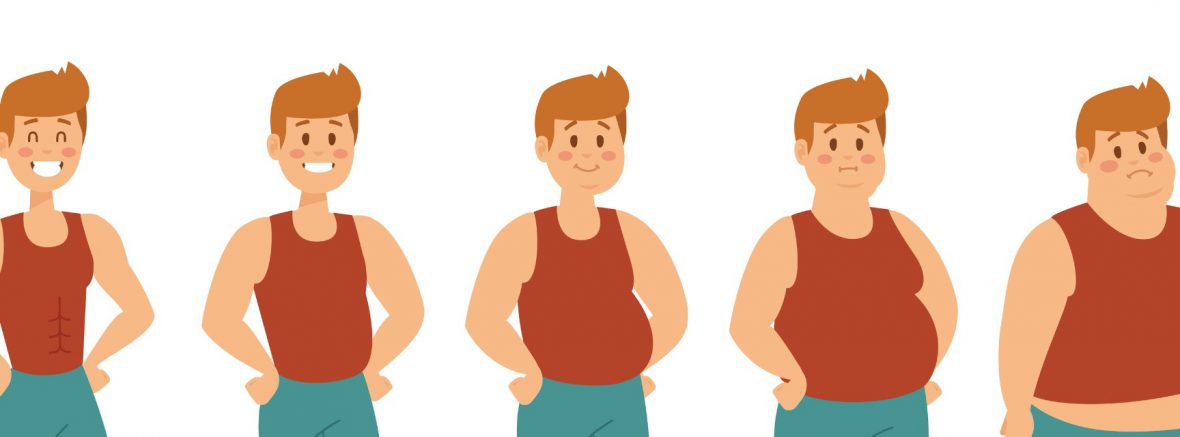Obesity is getting worse among the children and young adults in the US.
Obesity in children and teenagers is a serious issue in the U.S. Unfortunately, it is hitting even very young children (2-5 years old). The obesity problem in the U.S has grown noticeably in recent years. A report confirmed that on average, 37% of the children and adolescents in the United States are overweight. Obesity is an easy to recognize medical condition but very difficult to treat. Obese children are very likely to become obese adults unless they opt for a healthy lifestyle such as healthy eating and regular physical activity.
What is Obesity?
If you have too much accumulated body fat, you are obese. Obesity is different than being overweight. If a person is overweight, the weight may come from bone, muscles, fat, and body water. Obesity specifically points towards the extra fat percentage in a body. However, both terms mean that the person’s weight is more than the considerable healthy weight according to their height.
Some extra pounds does not make a person obese but it is an indication that he or she can gain weight easily. Normally, a child is considered obese when his or her weight is 10 percent greater than the recommended weight. Studies have shown that obesity begins between 5-6 years of age. And obese children have higher chances of becoming obese adults.
How to Measure Obesity?
If a person has a high score on BMI, he or she is considered as overweight or obese. Now, you may know about BMI, but here is a little explanation about it.
Body Mass Index (BMI)
BMI is a tool that is used to measure a person’s appropriate weight according to his or her age, height, and sex. There are numerous online calculators where you can easily check your BMI by entering your accurate body measurement (Height, age, and sex).
The range of BMI from 25-30 shows that a person is overweight. A BMI of 30 or above shows that the person is obese. This will give you a rough estimate but you can check for more details such as waist-to-height ratio (WtHR) and the waist-to-hip ratio (WHP).
After knowing about obesity and how to measure it, let’s come to the causes of increasing obesity in children and young adults of the U.S.
What are the Causes of Obesity?
Obesity occurs over time when someone eats more calories than the body requires. If you eat more calories and burn less in return, the extra calories store as fats in your body. Causes of obesity vary, such as obese parents have higher chances of obese children as well. A few medical conditions or physical problems can also cause obesity but it is rare. Specialists blame the modern society that continues to promote junk food despite the devastating evidence about its hazards. A lack of physical activity or regular exercise can also lead to obesity. There can be many factors that may affect your weight such as overeating, sedentary lifestyle, lack of physical activities, eating high-calorie foods, genetic reasons, and many more.
Here are a few important causes of obesity in children and young adults.
- Poor Eating Patterns
- Lack of Exercise
- Genetics
- Family History of Obesity
- Unnecessary Snacking
- Sedentary Lifestyle
- Emotional Problems
Poor Eating Patterns
In this busy life, our eating preferences shifted to quick and easy methods. For parents, daily schedules are so busy that they find no time to make healthier food at home. Children also find home-food as boring and prefer to rely on fast food. Frequently eating fattening foods such as junk food, fries, chocolates, cakes, donuts, cheese, pasta, and other unhealthy snacks can cause obesity in children. More evidence points to processed food and sugary drinks such as soda, energy drinks, and artificial fruit juices as culprits in obesity.
Lack of Exercise
Obesity in children is mainly caused by less involvement in physical activities. Children with very little or no physical exercise at all are more likely to be obese because they don’t burn calories as much they eat. Experts suggest that children, teens, and adults must walk for 60 minutes per day. Unfortunately, many children and young adults in the U.S prefer to spend their time doing stationary activities such as watching TV or playing video games. Use of electronic devices, such as computers, mobile phones, tablets, and video games can hinder children from exercising.
Genetics
Scientists explain that genetics can also play a role in obesity. Genes determine our body types and how they will store or burn fat. Prader-Willi syndrome and Bardet-Biedl syndrome are obesity syndromes that are caused directly by genetics. However, genetics solely isn’t responsible for the current obesity crisis in children. Genes and lifestyle behaviors may both be required for a person to be obese. Both genes and habits are passed down from parents to offspring, so if genes can help increase in obesity, one can change it by adopting a healthy lifestyle.
Family History of Obesity
Some families have a history of obesity which is a risk factor of young children to become obese. The risk of obesity is higher because there will be shared family behavior regarding eating habits. Such families tend to eat large portion size meals and put no restrictions on calorie intake. Children can learn these behaviors from an early age and develop the pattern of overeating as their lifestyle. Children can gain weight easily in an environment where fattening foods are always available.
Sedentary Lifestyle
Nowadays, many children spend most of their time on internet activities and remain inactive physically. We all know that modern life is a sedentary lifestyle where most of us prefer playing online games rather than playing real-life games at the playground. Research has shown that the average child spends at least 4 hours per day watching TV. With the increasing popularity of video games, mobile phones, and tablets, the number of hours may increase. The children who watch TV for more than 4 hours each day are at higher risk of becoming obese. Additionally, these children will likely to eat more food while sitting in front of the TV or computer.
Unnecessary Snacking
Many years ago, perhaps in our parents’ era, kids were allowed to eat one snack per day. Nowadays, they are having three or even four snacks a day, resulting in many additional calories per day. There are no such laws that prevent eating unhealthy food, so it’s becoming a habit. Children and teens in the U.S are eating unhealthy food and beverages during their school breaks, weekends, or even at home gatherings.
Emotional Problems
Bullying, depression, or lack of parental attention to children can cause emotional problems in them. Children with such emotional issues are less active in their lives. They also lack confidence in making new friends or being active in social activities. When a child does not participate in school activities, he or she can become obese. Research has shown that people tend to eat when they are bored, so, such children can gain weight easily.
Risk Factors of Obesity
Obese children and young adults are at high risk of:
- Obese children are more likely to miss school. The reasons could be the fear of being bullied or embarrassment for lack of involvement in physical activities.
- Obese children may find trouble in walking and sleeping thus leading to joint pain or lack of sleep.
- Breathing problems can also become an issue for obese children. The excessive stored fat in their body will burn even on a slight walk and they have to catch their breath.
- Hormonal imbalances are a common issue in obese teens, especially in girls. They can face a delay in their regular menstrual cycle because of obesity.
- Early age diabetes can also be a problem with obesity.
- Obesity can also cause various heart-related problems.
- Obese children are at greater risk of developing emotional problems. With the passing age, these emotional problems will grow along with the weight. Such teens tend to have lower self-esteem and lack of social life. There is a risk of developing anxiety, depression, and other severe psychological disorders in later life.
Final Thought
One-third of American children are obese, and the number is rising continuously. Children have less weight-related health issues than adults. Though, obese children are at greater risk of becoming obese adolescents and adults. Children become obese for many reasons. The most common causes of obesity are genetic factors, poor & unhealthy eating patterns, lack of regular exercises, overeating, poor sleep, busy lifestyles, more time on video games, and less time on playground games. The obesity place children and young adults at high risk of developing medical diseases such as diabetes, heart diseases, high blood pressure, and fatty liver later in life. There are also chances of developing sadness, stress, and low self-esteem.



